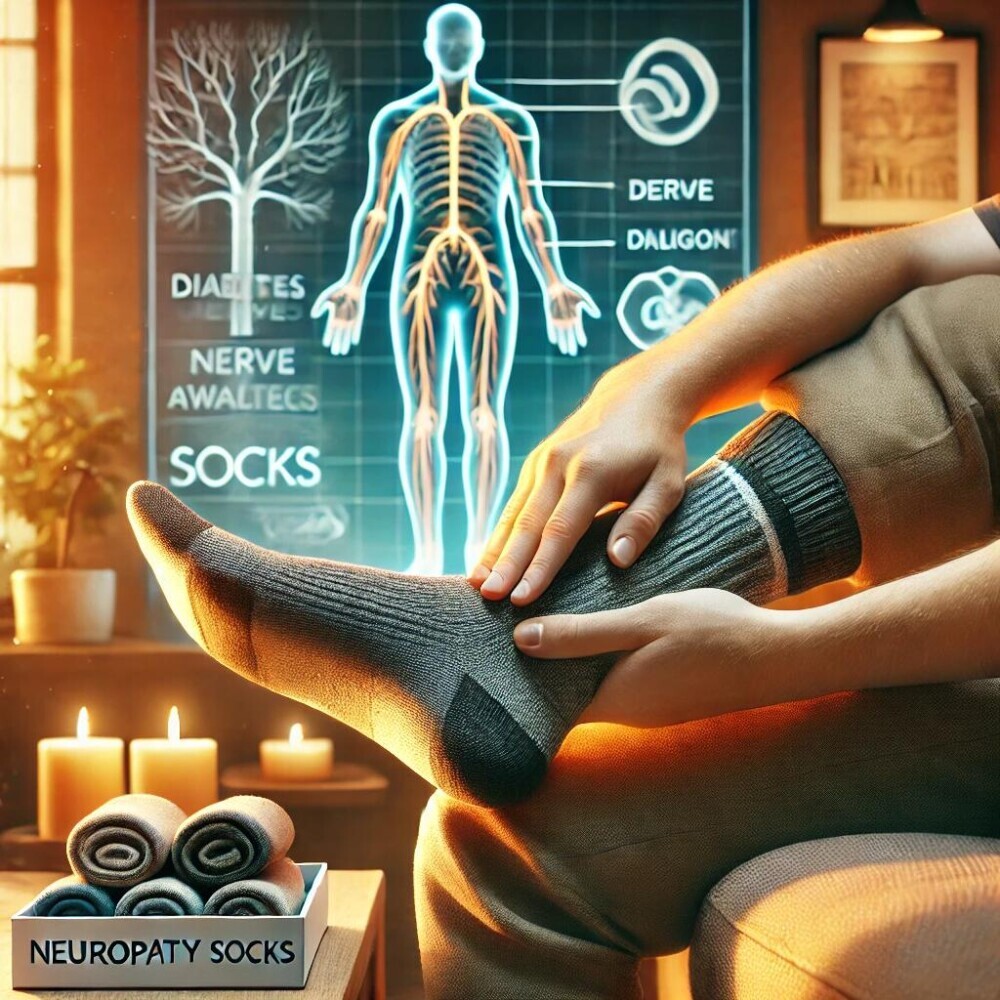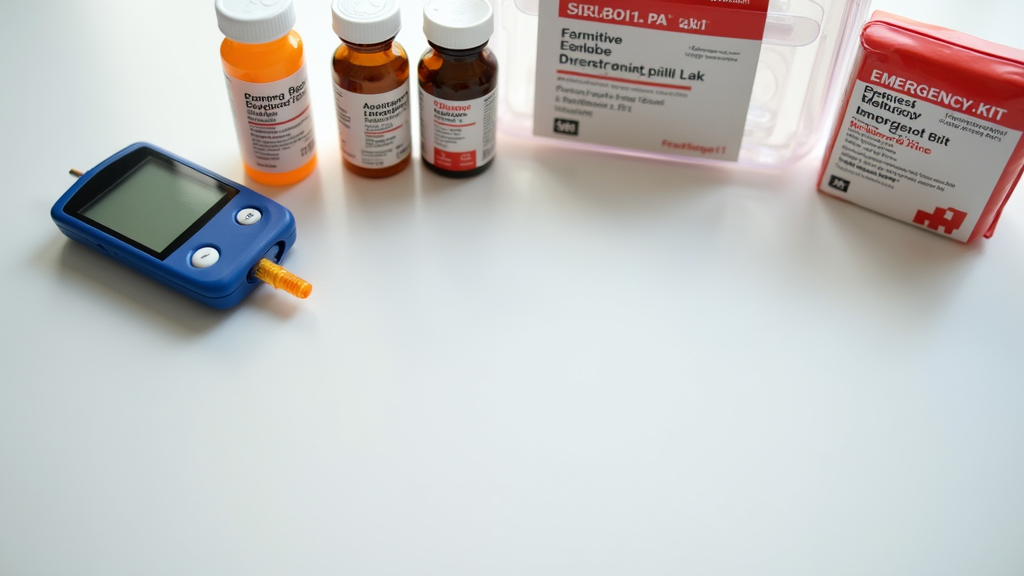Introduction
Diabetes related neuropathy is a type of nerve damage that develops when consistently high blood sugar levels remain unchecked for too long. Imagine your body’s wiring short-circuiting due to excessive sugar exposure—this is what happens when nerves get overwhelmed by diabetes related neuropathy. This condition affects multiple types of nerves, each with distinct functions and associated complications. Diabetes related neuropathy’s effects can range from mild discomfort to severe pain, making awareness and early intervention crucial.

Table of Contents
Types of Diabetic Neuropathy: Understanding the Affected Nerves
According to the Mayo Clinic, and many other reputable sources, there are four primary types of nerves that can be impacted by diabetes-related neuropathy:
Understanding diabetes related neuropathy is essential for managing its symptoms effectively. Regular check-ups and monitoring can help detect early signs of diabetes related neuropathy, allowing for timely intervention.
1. Peripheral Neuropathy
If you experience numbness or other symptoms, it may indicate the onset of diabetes related neuropathy, and seeking medical advice is essential.
Peripheral nerves serve as the body’s communication hotline, running through the feet, legs, hands, and arms. When these nerves are damaged, symptoms such as tingling, numbness, or loss of sensation in toes and fingertips occur. If you notice these signs, it’s a red flag that your nerve health may be at risk.
Living with diabetes related neuropathy can be challenging, but understanding the condition can empower patients to manage their health better.
2. Autonomic Neuropathy
Diet and lifestyle choices play a crucial role in preventing diabetes related neuropathy. Maintaining a healthy lifestyle can significantly reduce the risk.
These are the behind-the-scenes nerves responsible for regulating essential bodily functions such as digestion, bladder control, and heart rate. If you’re experiencing digestive problems, unexplained dizziness, or sudden bladder dysfunction, autonomic neuropathy might be to blame.
Research indicates that better management of diabetes can lead to lower incidents of diabetes related neuropathy.
3. Proximal Neuropathy
Though less common, proximal neuropathy can cause deep, aching pain in the thighs, hips, or buttocks. This type of neuropathy can significantly impact mobility, making even simple movements uncomfortable.
Understanding the specific types of diabetes related neuropathy can help tailor treatment approaches for better outcomes.
By recognizing the risk factors of diabetes related neuropathy, individuals can take proactive steps toward prevention.
4. Focal Neuropathy
Focal neuropathy targets specific nerves, often appearing suddenly and causing localized weakness or pain in the head, torso, or limbs. Unlike other types, focal neuropathy symptoms can resolve on their own but should still be monitored.
Recognizing the differences between these types allows for early intervention and effective management, preventing symptoms from worsening over time.
Causes and Risk Factors of Diabetic Neuropathy
Diabetes-related neuropathy primarily stems from chronically high blood sugar levels, which gradually damage nerves. However, several additional risk factors contribute to its development:
Education on diabetes related neuropathy can empower patients to seek timely medical attention and enhance their quality of life.
- Duration of Diabetes: The longer a person has diabetes, the higher the risk of developing neuropathy.
- High Blood Pressure: Elevated blood pressure silently contributes to nerve damage over time.
- Cholesterol Imbalance: Excessive bad cholesterol (LDL) can deteriorate nerve function.
- Obesity: Carrying extra weight makes blood sugar regulation more difficult, increasing the burden on nerves.
- Smoking: Smoking damages blood vessels and reduces circulation, worsening nerve complications.
Managing these risk factors through lifestyle changes, such as maintaining healthy blood sugar levels, controlling blood pressure, managing weight, and quitting smoking, can significantly reduce the risk of developing neuropathy.
Recognizing Early Signs and Symptoms
Detecting diabetic neuropathy early is crucial in preventing severe complications. Symptoms often start subtly but progressively worsen if left unchecked. Be on the lookout for:
- Numbness or tingling in hands and feet – A persistent “pins and needles” sensation.
- Burning or sharp pain – Often felt in the lower extremities, gradually moving upward.
- Extreme sensitivity to touch – Even soft fabrics may feel uncomfortable.
- Muscle weakness or coordination issues – Making daily activities more difficult.
- Digestive problems – Nausea, vomiting, diarrhea, or constipation could indicate autonomic nerve involvement.
- Bladder dysfunction or sexual issues – A sign of autonomic neuropathy affecting internal organs.
- Dizziness or sudden drops in blood pressure – Feeling lightheaded when standing up.
- Unexplained weight loss – May indicate nerve impairment affecting digestion and metabolism.
Addressing these warning signs promptly with your healthcare provider can prevent complications and improve quality of life.
Potential Complications and When to Seek Medical Attention
Ignoring diabetic neuropathy can lead to serious health risks that go beyond discomfort:
- Foot ulcers and infections: Loss of sensation can cause unnoticed injuries, increasing infection risks.
- Risk of amputation: Severe infections that don’t heal may necessitate amputations.
- Chronic pain and mobility issues: Long-term nerve damage can significantly impact movement.
- Cardiovascular complications: Blood pressure and circulation problems may develop due to nerve dysfunction.
If you experience persistent numbness, severe pain, difficulty walking, or sudden changes in bladder/bowel function, consult a healthcare provider immediately for proper evaluation and treatment.
If you notice any signs of diabetes related neuropathy, consult with your healthcare provider to explore preventive measures and treatment options.
Diagnosis and Treatment Approaches
Getting an accurate diagnosis for diabetic neuropathy involves a comprehensive assessment, including:
- Physical examination and medical history review – Identifying symptoms and risk factors.
- Nerve conduction studies & EMG (Electromyography) – Measuring nerve function and muscle response.
- Quantitative sensory testing – Evaluating nerve sensitivity to pressure and temperature.
- Autonomic testing – Assessing heart rate and blood pressure responses.
Managing and Treating Neuropathy
- Blood sugar control: The most effective strategy to slow nerve damage progression.
- Medications: Pain relievers, antidepressants, anticonvulsants, and topical treatments can provide relief.
- Physical therapy: Strengthens muscles and improves balance, reducing the risk of falls.
- Lifestyle modifications: A healthy diet, regular exercise, and avoiding smoking improve overall nerve health.
Prevention and Coping Strategies
Managing diabetes related neuropathy effectively often requires a multi-faceted approach, including medication, lifestyle changes, and regular monitoring.
While neuropathy can’t always be reversed, proactive management helps minimize its impact:
- Monitor blood sugar levels – Regular checks and medication adherence prevent nerve deterioration.
- Practice daily foot care – Inspect feet for cuts, blisters, or infections.
- Wear proper footwear – Choose well-cushioned, supportive shoes to prevent injuries.
- Stay active – Low-impact exercises like walking or swimming help circulation.
- Seek support – Join support groups or counseling for emotional and mental well-being.
Educating yourself and working closely with your healthcare team ensures you stay ahead of potential complications.
The Role of Neuropathy Socks in Pain Management
One effective yet often overlooked tool for managing diabetic neuropathy is neuropathy socks. These specialized socks are designed to:
✅ Provide gentle compression to improve circulation.
✅ Reduce pain and discomfort by relieving pressure on sensitive areas.
✅ Prevent moisture buildup to lower the risk of infections.
✅ Offer seamless construction to eliminate irritation from rough seams.
✅ Improve temperature regulation to keep feet warm and reduce nerve pain.
Our Top Neuropathy Sock Recommendation
After extensive research and user reviews, NanoSocks Compression Socks stand out as the #1 best choice for neuropathy-related pain.
Why NanoSocks?
✔ Targeted compression zones alleviate nerve pain and enhance circulation.
✔ Breathable, high-quality materials keep feet dry and comfortable.
✔ Seamless, non-binding design prevents irritation and pressure points.
✔ Highly rated by thousands of users for pain relief and comfort.
- Understanding how neuropathy socks can help alleviate symptoms of diabetes related neuropathy is vital for those suffering from this condition.
- By incorporating neuropathy socks into your routine, you may find relief from the discomfort associated with diabetes related neuropathy.
- Managing diabetes related neuropathy through knowledge and support is key to achieving a better quality of life.
- Take proactive steps in managing your diabetes related neuropathy for a healthier future.
- Explore options and support resources available for those affected by diabetes related neuropathy.
- Engage with community resources and networks for additional support regarding diabetes related neuropathy.
- Stay informed on the latest research and strategies for managing diabetes related neuropathy effectively.
These socks are endorsed by Dudes Destroying Diabetes as an essential tool for managing diabetic neuropathy.
🔹 Ready to experience relief? Get your pair today: NanoSocks Compression Socks on Amazon
Final Thoughts
Diabetes-related neuropathy can be challenging, but knowledge and proactive management can make a world of difference. Understanding the types, symptoms, and prevention strategies helps in early detection and effective treatment. Incorporating neuropathy socks like NanoSocks into your daily routine can significantly reduce pain and improve mobility. Be sure to check out
Take action today—protect your nerve health, and step into comfort with the best neuropathy socks available!
🔹 Get yours now: NanoSocks Compression Socks on Amazon
Last Words
Be sure to check out our other content, such as, How To Recognize And Respond To Diabetic Emergencies or Top 5 Foods That Lower Blood Sugar Quickly.
Disclaimer for Dudes Destroying Diabetes
The content provided by Dudes Destroying Diabetes is for informational and educational purposes only. We are not medical professionals, and the information on this website, social media channels, and any related platforms should not be interpreted as medical advice, diagnosis, or treatment.
Before making any changes to your diet, exercise routine, or health regimen, we strongly recommend consulting with a qualified healthcare professional or medical provider. Every individual’s health needs are unique, and what works for one person may not be suitable for another.
Dudes Destroying Diabetes is not responsible for any adverse outcomes or injuries resulting from the use or misuse of the information provided. By engaging with our content, you acknowledge and agree that you assume full responsibility for your health decisions.
If you have any medical concerns, please seek guidance from a licensed healthcare professional.
Here’s a little transparency: Our website contains affiliate links. This means if you click and make a purchase, we may receive a small commission. Don’t worry, there’s no extra cost to you. It’s a simple way you can support our mission to bring you quality content.





